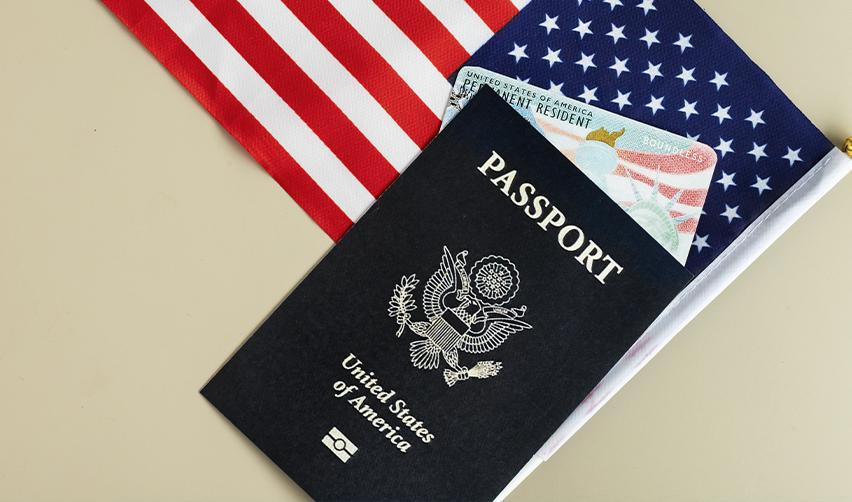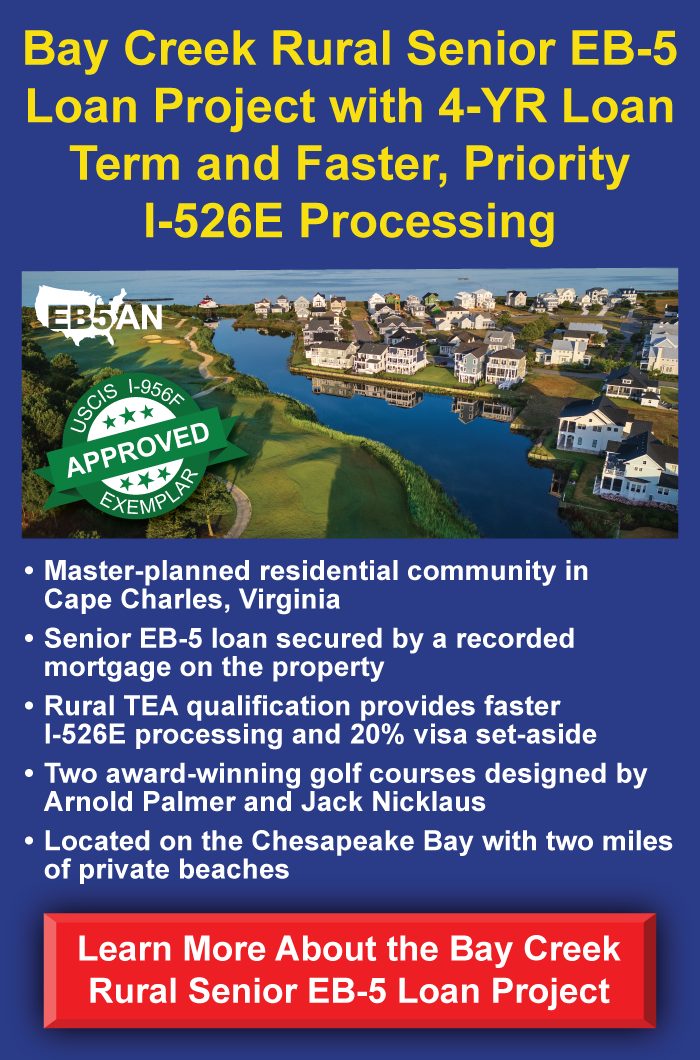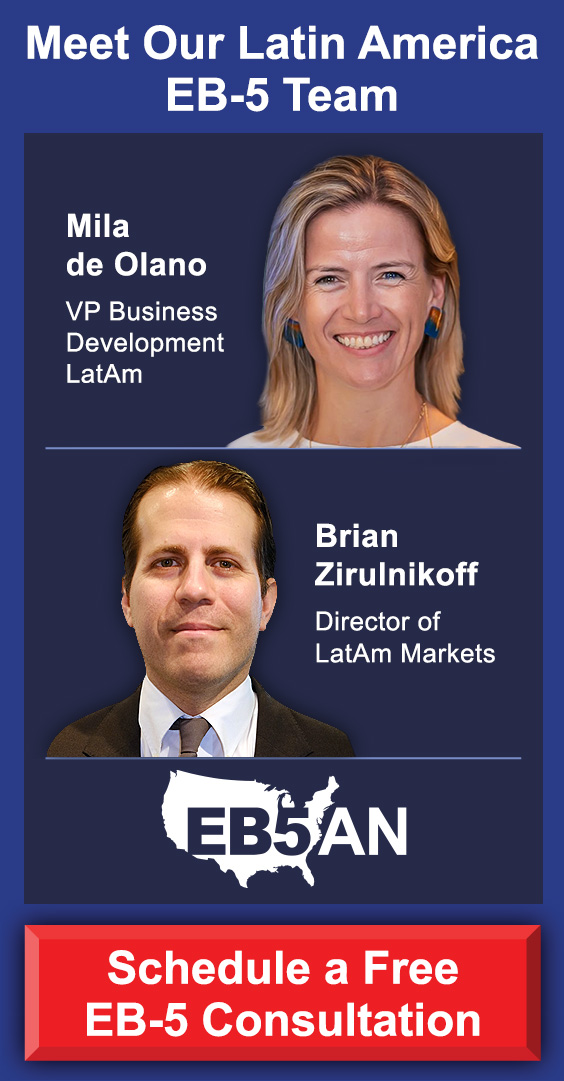Many foreign nationals know that they want to become lawful permanent residents of the United States. In many cases, they have work or personal reasons driving their need to get Green Cards quickly.
But they don’t know fast and reliable ways to obtain these Green Cards.
That’s understandable. The range of options available—and the processes connected to each option—can be confusing.
In this article, we’ll describe the various Green Card options available so you can pick the one that’s best for your situation.
Ways to Get Green Card Approval Fast
The EB-5 Program: The Fastest Way to Get a Green Card for Qualified Investors
- Eligibility Criteria
- Overview of the Application Process
- How Long Does It Take to Get an EB-5 Green Card?
- Consider a Rural Area Investment Through a Regional Center
Get Your Green Card Faster With EB5AN
Ways to Get Green Card Approval Fast
For most foreign nationals who have the required investment capital, the EB-5 Immigrant Investor Program is currently the fastest route to U.S. lawful permanent resident status. We’ll provide an overview of it later in this post.
However, this program may not suit everyone. Alternative options may be a better fit for some individuals.
Let’s take a look at some of the most popular ways to get a Green Card quickly.
Have a Close Connection to a U.S. Citizen or Resident
Foreign nationals with the right connections can apply for family-based visas. For those who meet the criteria, this can be one of the fastest ways to get a Green Card. However, approval times may vary widely between individuals and categories.
Family-Based Visa Requirements
Family-based visas fall under two categories:
- Immediate relative visas: For the spouse, unmarried children under the age of 21, or parents of a U.S. citizen.
- Family preference visas: For other qualifying children or siblings of a U.S. citizen or the spouse and unmarried children of a legal permanent resident (Green Card holder).
Downsides of Family-Based Visas
Before you apply, be aware of these drawbacks to applying for a family-based or marriage-based Green Card:
- You are only eligible if you have an immediate family member who is a U.S. citizen or Green Card holder.
- You may face criminal penalties if USCIS determines that your marriage to a U.S. citizen took place solely to obtain a Green Card.
- Several countries face extensive visa backlogs, which require selected applicants to wait for many years before a visa becomes available.
Those who lack a family connection to a U.S. citizen or resident can explore employment-based Green Cards.
Have an Extraordinary Ability
The employment-based, first preference (EB-1) visa is intended for priority workers. It allows someone who is widely recognized to be at the very top of their artistic, athletic, business, educational, or scientific field to move to the United States.
EB-1 Visa Requirements
To qualify, you generally must demonstrate that you meet at least three out of the 10 criteria listed below:
- Evidence of receiving a national or international award.
- Evidence that you belong to an association in your field that requires outstanding achievement.
- Evidence of recognition in professional publications or significant media outlets.
- Evidence that you wrote articles published in significant media outlets.
- Evidence of being asked to critique the work of others in your field.
- Evidence of making original and significant contributions in your field.
- Evidence that your work has been displayed at exhibitions.
- Evidence of performing a key role in reputable organizations.
- Evidence of receiving high monetary compensation relative to others in your field.
- Evidence of your commercial success in the arts.
Alternatively, those in management roles may be eligible to receive an EB-1 visa. Multinational companies can relocate their managers or executives from a location outside the United States to a related U.S. company branch or affiliate on U.S. soil under the EB-1 program.
Downsides of the EB-1 Visa
The main downside to this Green Card route is that very few people can prove they have an extraordinary ability or fulfill the qualification criteria for managers or executives.
There are other employment-based Green Card options you may wish to consider.
Get Company Sponsorship
The EB-2 and EB-3 visa categories are other ways to get lawful permanent residence. It usually takes several years from start to finish to get a Green Card via one of these pathways.
EB-2 Overview
EB-2 visas are meant for professional individuals who meet the following requirements:
- Have an advanced degree in a field where they have shown exceptional ability.
- Have a job offer from a U.S. company.
- Have a labor certification showing that no qualified U.S. worker is available for the position.
- Receive USCIS approval of their Form I-140.
- Receive USCIS approval of their Form I-485 (if applying from within the United States).
A select few may qualify for an EB-2 National Interest Waiver. This waives the standard job offer and labor certification requirements. They must prove they have worked and will continue to work in an area of critical importance to the U.S. government.
EB-3 Overview
EB-3 visas are intended for skilled workers, professionals, and some unskilled workers. To receive one, an applicant must meet the following requirements:
- Have applicable training, experience, or job education if applying as a worker.
- Have a bachelor’s degree or the foreign equivalent if applying as a professional.
- Have a job offer from a U.S. employer.
- Have the employer complete the labor certification process and show that no qualified U.S. worker is available for the position.
- Receive USCIS approval of their Form I-140.
- Receive USCIS approval of their Form I-485 (if applying from within the United States).
Downsides of EB-2 and EB-3 Visas
The downsides of this approach include the following:
- You must either have an advanced degree or fulfill a skill requirement that the company cannot fill through its usual recruitment channels.
- Your employer needs to sponsor you and file the I-140 immigrant petition on your behalf.
- Some countries face significant backlogs.
Win the Green Card Lottery
The Diversity Immigrant Visa Program, sometimes called the “Green Card Lottery,” allows residents of countries with historically low immigration rates to the United States to apply for immigrant visas.
The major downside is that winning a Diversity Immigrant Visa Program Green Card comes down to luck.
The EB-5 Program: The Fastest Way to Get a Green Card for Qualified Investors
For decades, the EB-5 program has used foreign investment capital to create jobs for U.S. workers. In exchange, the investor and their eligible immediate family members can receive Green Cards. These come with access to many immigration benefits.
Eligibility Criteria
To be approved for an EB-5 visa, you must be a foreign national who can meet the following requirements pay the required minimum investment amount of $800,000 and have documentation proving that your investment funds were lawfully obtained.
Overview of the Application Process
These are the main steps of the EB-5 application process.
- Decide whether to invest directly or via a regional center.
- Choose an EB-5 project.
- Fill out the required paperwork with the help of an immigration lawyer.
- Transfer investment funds.
- File Form I-526E to apply for a conditional Green Card.
- Participate in a consulate interview or file Form I-485 to adjust immigration status. Eligible investors who already reside in the U.S. can file this form concurrently with their Form I-526E.
- When the time comes, submit Form I-829 to remove conditions on permanent resident status.
- Receive your investment funds back (if investment has been successful).
- Apply for U.S. citizenship by naturalization after five years of residency.
How Long Does It Take to Get an EB-5 Green Card?
EB-5 Green Card applications haven’t always been approved as swiftly as they are today. In part, that’s because of issues like processing disruptions, visa backlogs for certain applicants from high-demand countries, and inexperienced individuals choosing to go it alone with direct investments instead of regional center investments.
In many cases, it used to take several years to obtain an EB-5 Green Card. However, you can now do a few things to speed up the process.
Consider a Rural Area Investment Through a Regional Center
The regional center investment option is the best choice for nearly all EB-5 applicants. Since its inception, the EB-5 Regional Center Program has been a simpler investment option than the direct investment model, with more safety features and easier job creation requirements. Regional center investors also have fewer management responsibilities than direct investors.
Thanks to the EB-5 Reform and Integrity Act of 2022 (RIA), the investment process is now faster, easier, and safer than ever for each EB-5 applicant.
The RIA introduced three new set-aside visa categories for the EB-5 program, and allocated visas among them as follows:
- Rural targeted employment area (TEA) projects: 20%
- High-unemployment (urban) TEA projects: 10%
- Public infrastructure projects: 2%
Unreserved non-TEA projects make up the remaining 68% of visas.
Aside from “reserving” these visa quotas, TEA investments also come with the benefit of the lower investment threshold of $800,000, as opposed to the standard EB-5 minimum investment amount of $1,050,000.
Let’s look at these options in more detail below.
EB-5 public infrastructure projects use investor funds for specific governmental projects like roads or utilities. Due to these strict requirements and the complexity of structuring such projects to comply with EB-5 regulations, the public infrastructure set-aside category has not yet gained significant traction or clarity as a popular category.
High-unemployment or “urban” TEAs are located in areas with an unemployment rate at least 150% of the national average. While investing in a high-unemployment TEA allows EB-5 investors to qualify for the reduced investment threshold, these projects face certain limitations compared to rural TEAs. High-unemployment TEAs are not prioritized for processing by USCIS, leading to longer adjudication times, and they are more likely to experience visa backlogs due to high demand and a lower allocation.
For many investors from high-demand countries, a rural area EB-5 investment is the best option. Let’s explore this option further below.
Rural TEA Characteristics
This is what counts as a rural TEA:
- A population that does not exceed 20,000, as of the most recent decennial census.
- Located outside a metropolitan statistical area (MSA), as defined by the U.S. Office of Management and Budget.
- Not located by the outer boundary of a city or town with a population equal to or greater than 20,000.
Rural TEA Benefits
Individuals from India and China who apply for unreserved visas may experience major delays because of application backlogs. EB-5 applicants from such high-demand countries may end up waiting for several years.
They can avoid such delays under the rural set-aside EB-5 visa category, which currently has no visa backlog and is not expected to face long backlogs in the future. Rural TEA investors also receive priority processing of Form I-526E.
Some such investors have become conditional Green Card holders within just a few months of investing.
Get Your Green Card Faster With EB5AN
It’s not easy for newcomers to navigate the EB-5 process and immigration law by themselves. You’ll save yourself a lot of time, effort, and money by collaborating with a professional EB-5 firm. For the best chance of achieving your financial and immigration goals, work with an immigration attorney and a company that has a track record of success.
For qualified investors and their immediate relatives, the fastest way to get Green Card help is with EB5AN. To learn more, book a free call with us today.













